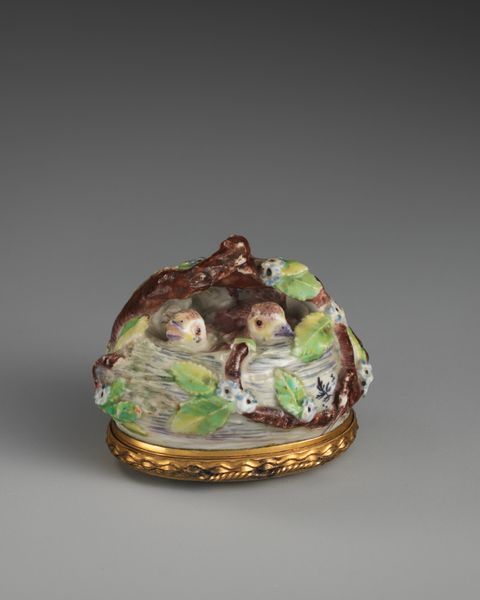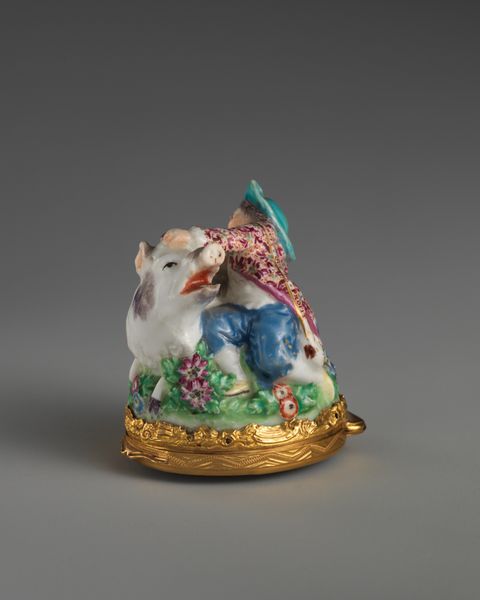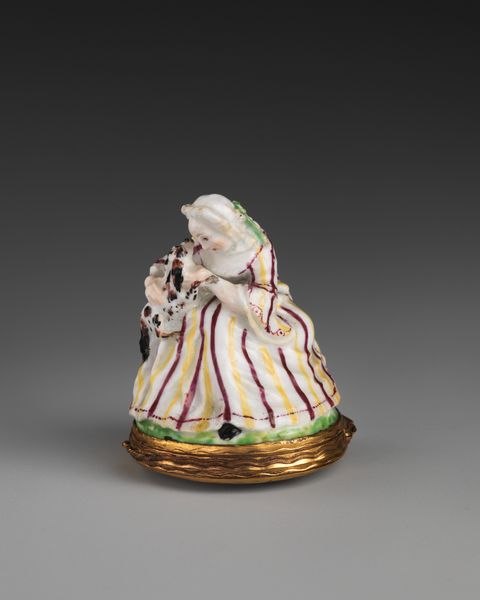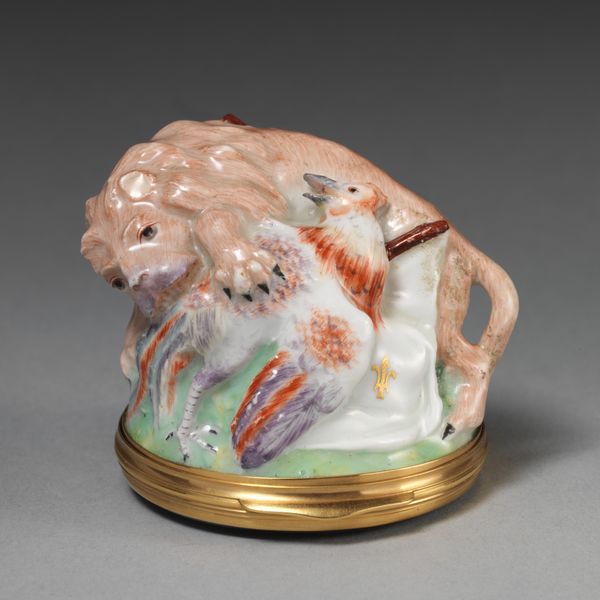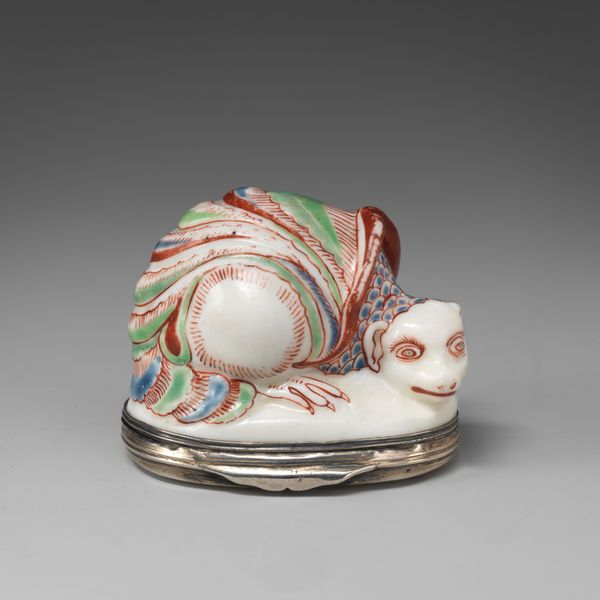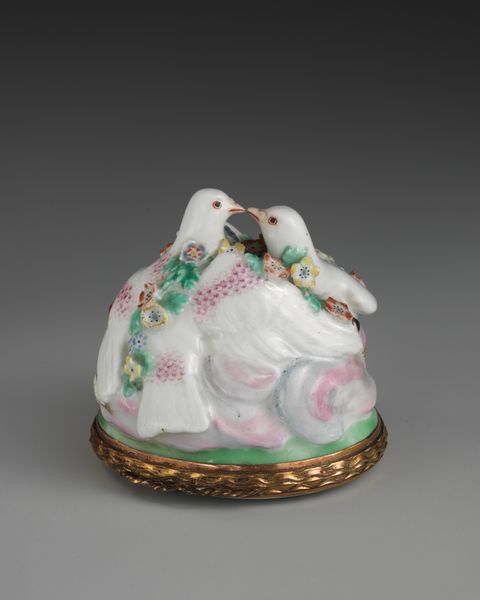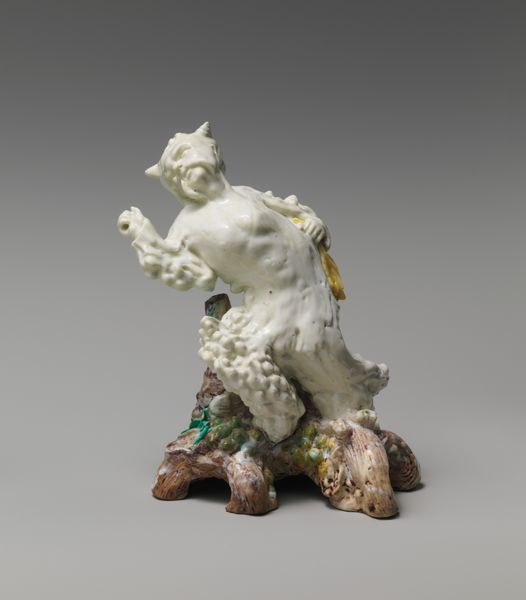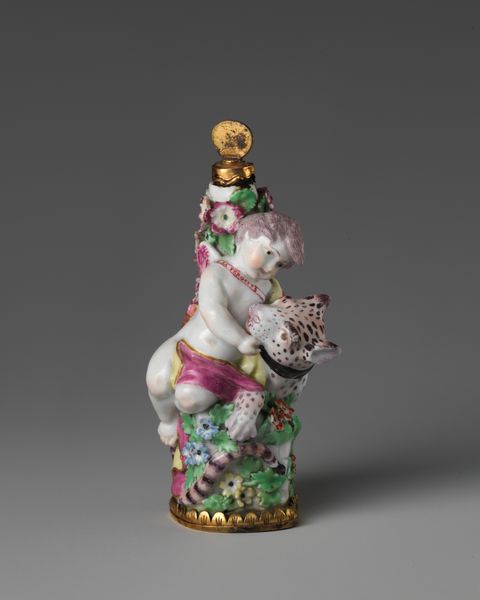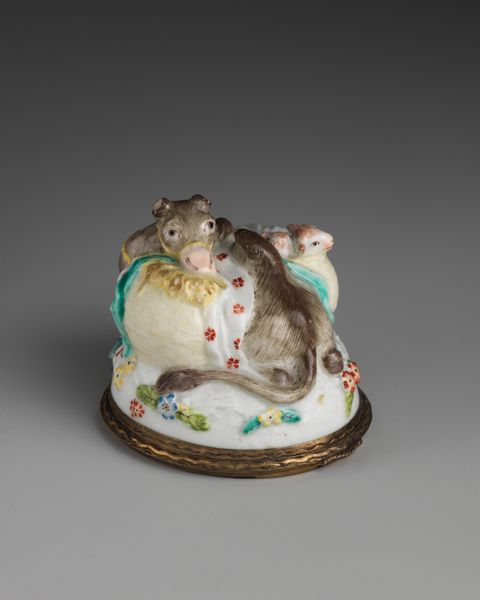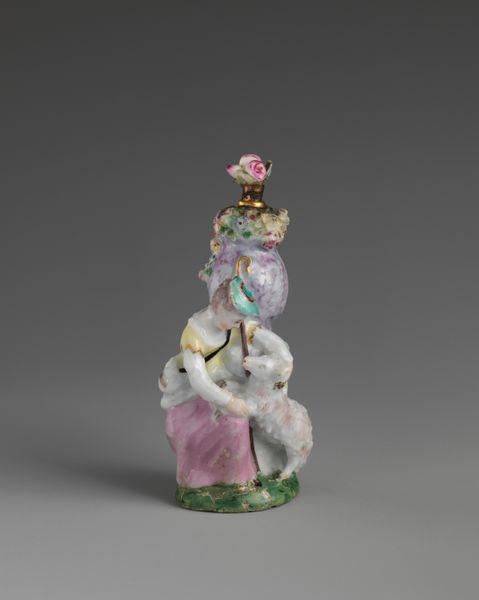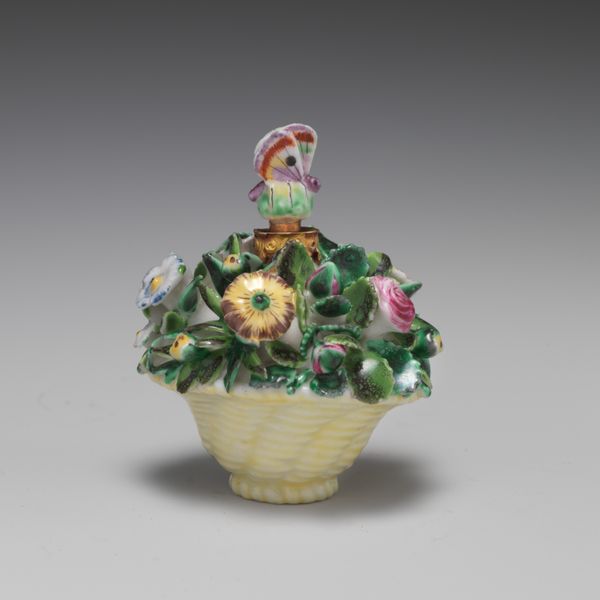
ceramic, porcelain, sculpture
#
animal
#
ceramic
#
bird
#
porcelain
#
sculpture
#
rococo
Dimensions: Overall: 1 7/8 × 2 1/4 in. (4.8 × 5.7 cm)
Copyright: Public Domain
Curator: Here we have a "Bonbonnière" created between 1751 and 1761 by the Chelsea Porcelain Manufactory. The piece, a delicate porcelain sculpture, resides in the Metropolitan Museum of Art. Editor: It's undeniably charming, with this mother bird protectively nesting her young! I am really struck by the details around its small, compact size. It appears very fragile! Curator: It certainly is. "Bonbonnière" is French for a candy box, and objects such as these, often elaborate, were popular among the upper classes during the Rococo period. Editor: It's interesting to see such emphasis on domesticity and family presented within a luxury item. How complicit were such objects to existing societal conventions around women's perceived place within the home? Curator: That's an important perspective. Objects like these also showcased the incredible skill of the artisans involved. Chelsea porcelain was highly prized. These artisans used considerable labor to master the techniques required to mold and paint the porcelain into such intricate shapes, so it became a status marker. The factory's location near London also meant it was part of a burgeoning culture of consumerism. Editor: I imagine these were intensely collected. Were their aesthetic choices also rooted in existing power dynamics? What does the almost romantic vision of a bird's nest gloss over? Is there also a power dynamic implied between humans and animals within the sculpture, especially given its function as a vessel? Curator: The Rococo style celebrated ornamentation and lightheartedness, qualities embodied by the pastel colors and the detailed naturalistic elements. Such delicate works played a role in aristocratic social rituals. The giving and receiving of sweets, displayed in pieces such as these, would be moments of social exchange. Editor: Looking at this "Bonbonnière" invites us to unpack social rituals, craftsmanship, class, and gendered expectations. It really does show that seemingly frivolous objects carry significant cultural weight. Curator: Absolutely, this piece represents a unique point in history, embodying luxury and skill within a changing society. Editor: Examining an object such as this demonstrates the intertwined relationships between art, society, and identity. I feel deeply provoked by the implications behind it, as it brings so many factors to the forefront.
Comments
No comments
Be the first to comment and join the conversation on the ultimate creative platform.

